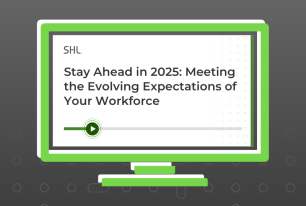See and Be Seen: Inclusive Language Matters in Growing a Diverse Workforce
Respecting employee identity by using inclusive gender-neutral language positively affects community connections, employer reputation, financial outcomes, and employer talent.
Share
Building a diverse and inclusive culture is one of the most complex undertakings an organization of any size can pursue. Yet it takes minor efforts like using gender-neutral language throughout the business to establish the foundations that can eventually grow into something meaningful.
A first step to take is to recognize that traditional labels may not apply to everyone. People differ, and that is the actual power of a truly diversified and productive workforce. For an organization, it is key to understand this truth when building a recruitment process.
Utilizing tools like gender-neutral language is a tangible, demonstrative way to begin creating an environment for employees and candidates to be their unique selves. By adjusting how we refer to candidates, we are not only validating the uniqueness of individuals that make up an organization, we are also welcoming in people who can provide valuable insights and experiences that may be different from our own and enable us to broaden our scope.
There are many benefits that an inclusive culture attracts. Here are four that stick out to me the most:
#1—Community Connection
The individuals who make up an organization’s workforce and culture hail from different communities defined by proximity, values, or both. Organizations that include individuals from diverse backgrounds and experiences are in a great position to build connections with the communities their employees represent. This connection fosters a valuable and inclusive culture, gaining perspectives that help an organization engage with a broader audience.
#2—Talent Bench
Internal or external applicants who do not feel seen or respected by an organization will most likely not develop the same sense of engagement and loyalty as those that do. As of 2017, 12% of millennials said they do not identify with the binary “he” or “she” pronouns, which is double the percentage of Generation X who said the same. More than one-third of the people in Generation Z know someone who uses non-binary pronouns such as “they” and ”them.”1 The percentage of non-binary individuals has increased by generation, meaning this topic is not going away and organizations would do well to look for opportunities to embrace this movement or risk losing talented individuals and their potential contributions.
#3—Employer Reputation
What happens when employees see that their organization is proactively leading efforts to be aligned well with individuals? They will feel close to the organization and become the business’ advocate. They’ll talk to their friends in a positive manner, they’ll actively post on social media, and they may even try to recruit former colleagues to come to work with them!
People who share a common belief that individual identity should be respected will recognize the efforts taken to meet those values and become a pioneer. An organization that positions itself as a supporter of diverse individuality and contributions is one that people will patronize and promote.
An organization that positions itself as an ally and supporter of diverse individuality and contributions is one that people will patronize and promote.
#4—Business Outcomes
Organizations with high rates of diversity and inclusion outperform those without. Multiple studies conducted over the past few decades have confirmed that having a diverse workforce improves a company’s business outcomes2. Whether in the form of improved sales, increased return on invested capital, or ability to innovate and adapt to complex problems, organizations willing to invest the time and effort into attracting and retaining diverse talent are more likely to realize greater outcomes over time.
Regardless of an organization’s current level of investment in diversity and inclusion initiatives, efforts to create a more inclusive culture and recognize employee individuality fosters community connections, bolsters employer reputation, improves business outcomes, and builds a strong talent bench for years to come. Curious about how SHL can support your diversity and inclusion efforts? Explore our offerings or contact us today.
Endnotes
1 Harris Poll on behalf of GLAAD, 2017.
2 Catalyst 2004, PNAS 2004, Deloitte 2012, American Sociological Association 2009, Boston Consulting Group 2018, McKinsey 2018, Wall Street Journal 2019.









